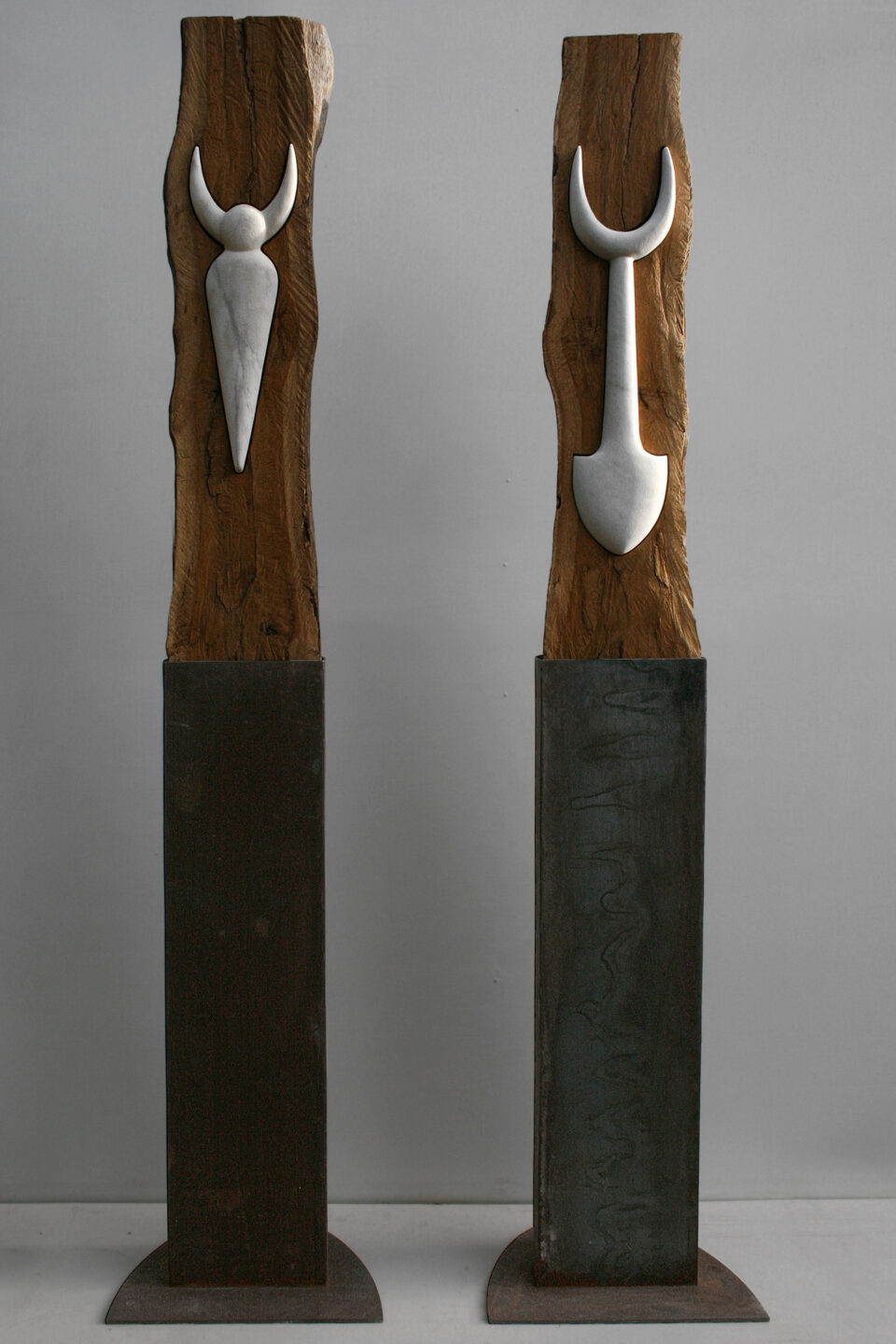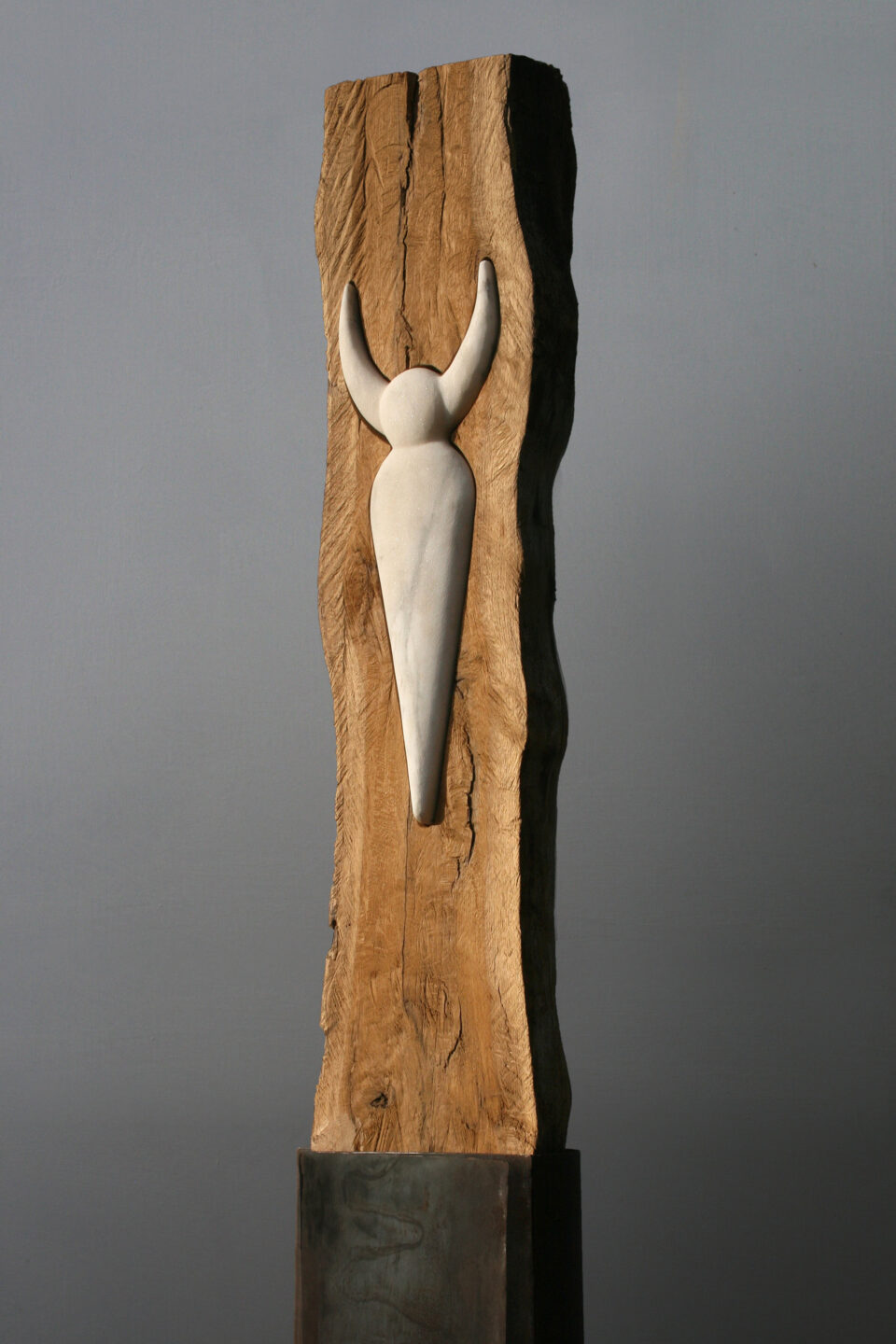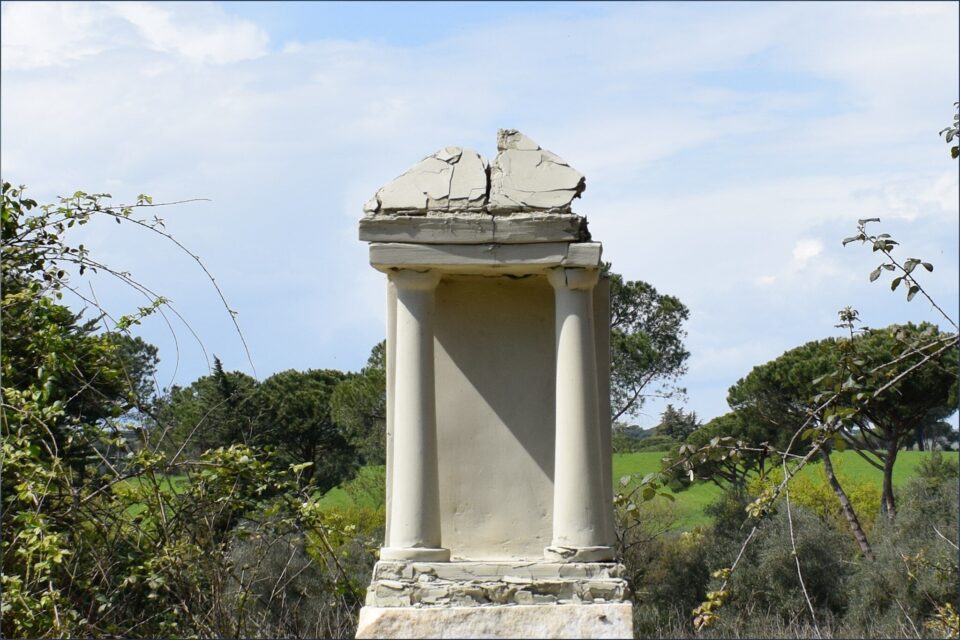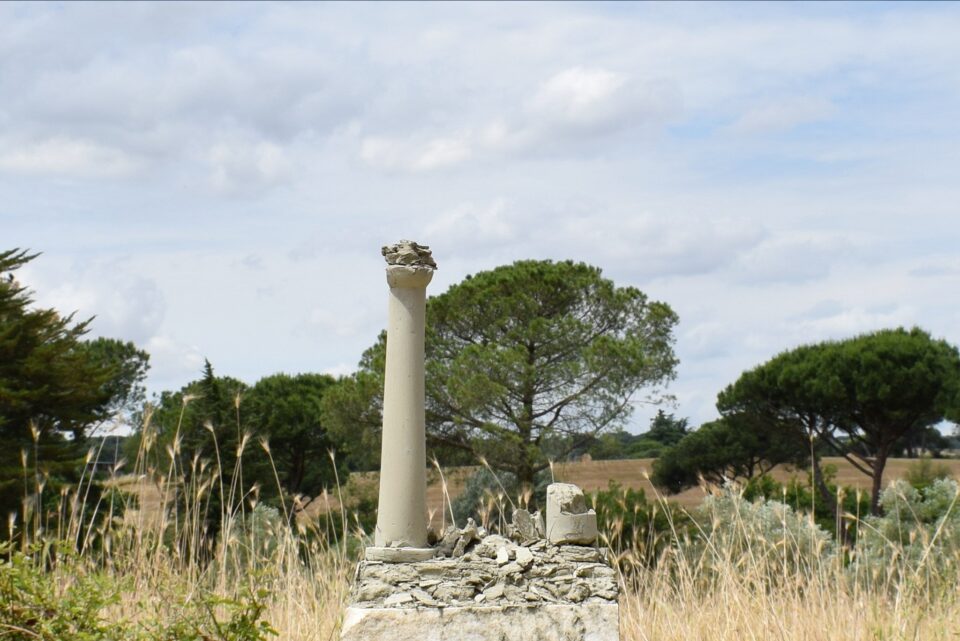Alberto Emiliano Durante was born in Rome in 1977. He graduated in sculpture from the Academy of Fine Arts in Rome with a thesis on ritual sacrifice and artistic representation.
He trained as a sculptor in India, Spain, Greece and Friuli Venezia Giulia. He has also been included in critical texts such as Varco Attivo calambour o Gioco Linguistico by Giovanna dalla Chiesa, Idoli by Giulia Zamperini and Ossa by Noemi De Simone. His work evokes symbols, myths and archaic figures through a contemporary sensibility, where linearity and symmetry predominate. The archaic returns, through a structural simplification that gives his creations an expressive immediacy.
In this conversation with the curator Belen De Bacco, Alberto discusses his career as a sculptor both in Italy and abroad, his experiments with a variety of techniques, including electro-sedimentation, the meaning of bones and how the past creates archetypes for future forms.

Alberto Emiliano Durante, artist 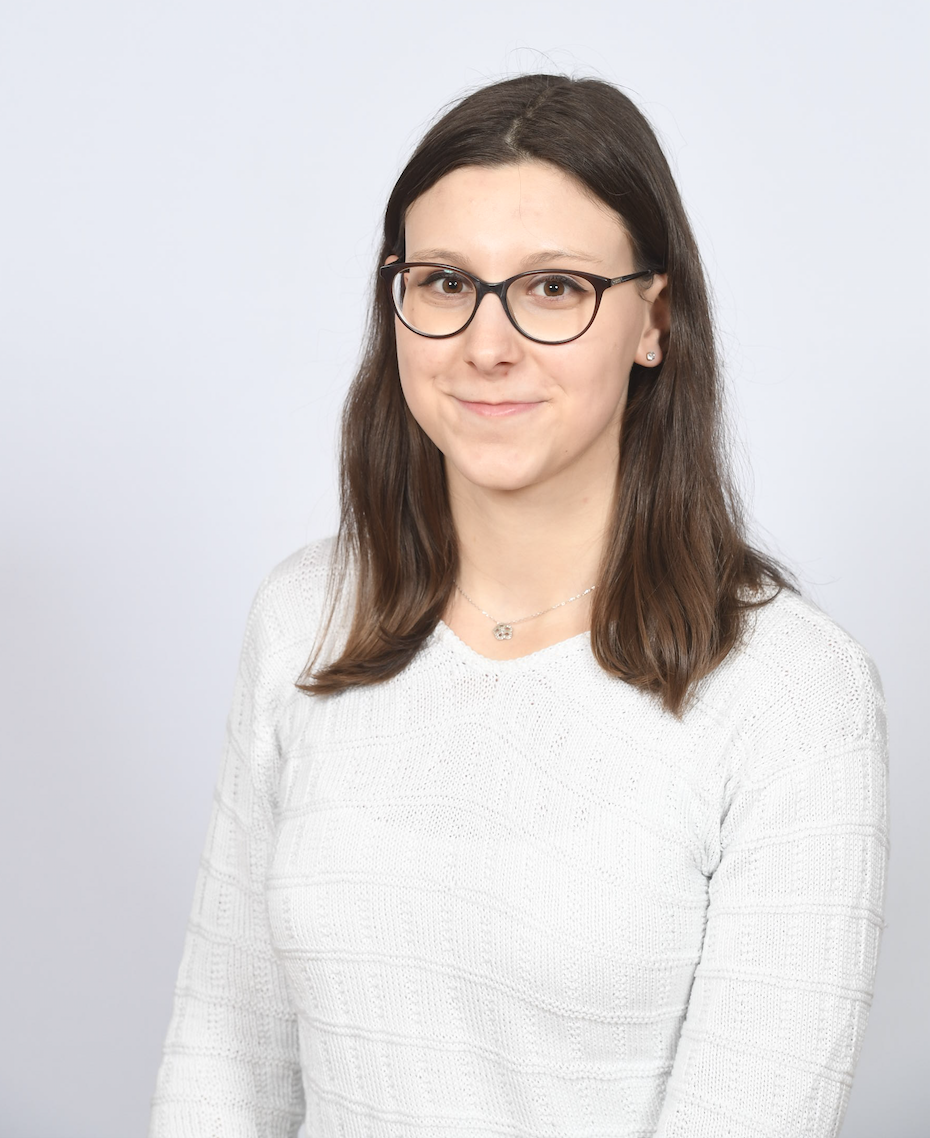
Belen De Bacco, curator
Belen De Bacco: Fatherland is the artwork made by you which has been selected for “Sign of the Times”, our first digital exhibition. Could you tell us more about this artwork and its origin?
Alberto Emiliano Durante: Fatherland is an artwork created in 2020 in which my passion for archaeological finds and ancient Roman religion emerges. I picked up some of the first fragments included within the artwork in a rural land in 2008, a period in which I was working on an environmental installation at Villa Torlonia, organised by the Academy of Fine Arts in Rome. In 2017, I started creating small fictile and stylised artworks inspired by the ancient Roman festival ‘Oscilla’, a ritual that involved the production of small statues made of terracotta that were then hung from the trees. During the solstice period of 2019, I decided to casually mix the ancient fragments with the ones I had made on a wooden table and found out that the combination intrigued me. I finally found the time to complete this artwork during the pandemic.

Fatherland, 2020. Included in Sign of the Times exhibition 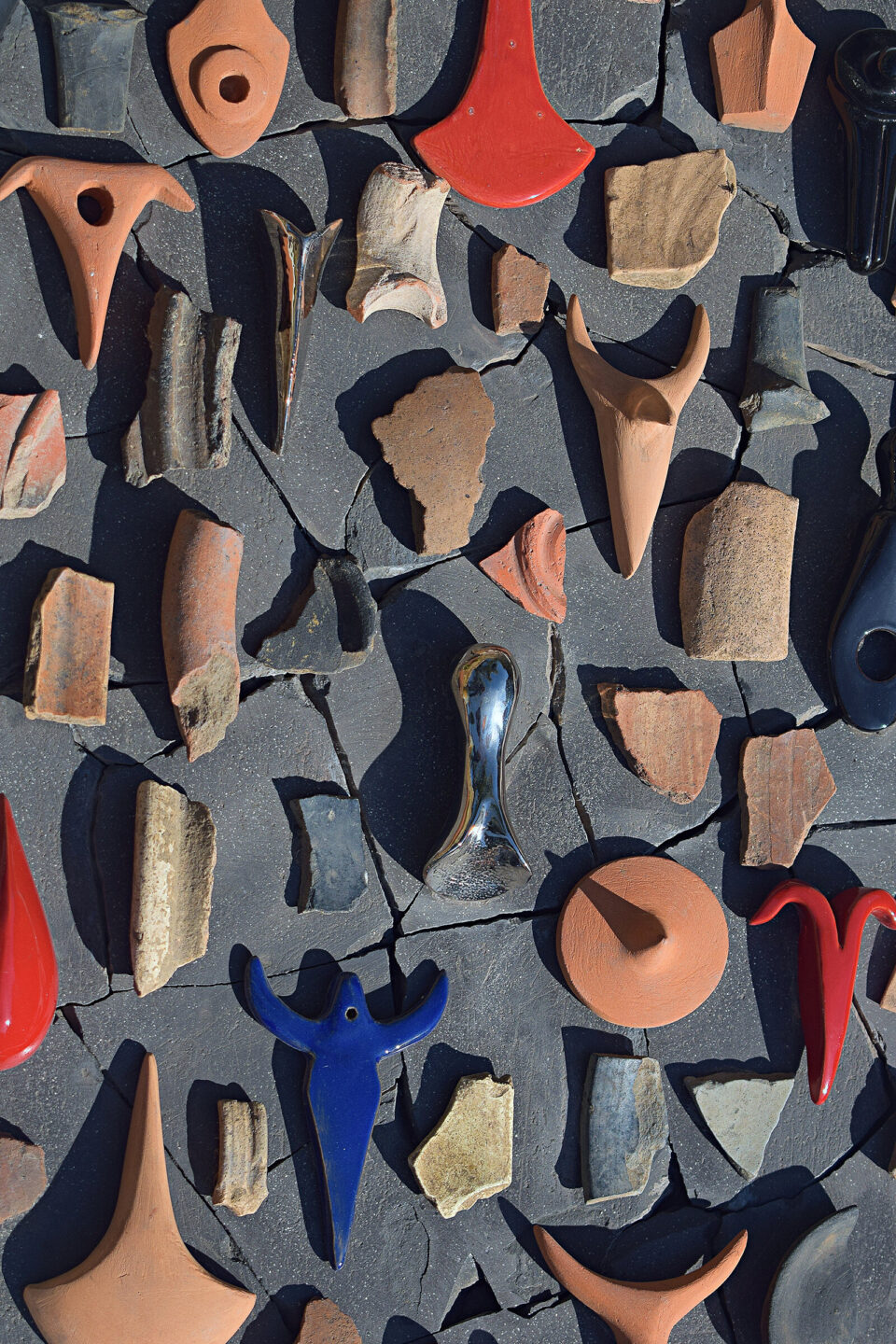
Close-up of Fatherland
BDB: What impact has covid-19 had on your art or your creative process?
AED: The period of the pandemic was a moment of introspection; it has given me the possibility of focusing and dedicating myself to the completion of artworks which until that moment were stuck at the idea stage.
BDB: In your oeuvre, it is possible to notice an interest in symbolism, myths and archaic figures. Could you tell us more about this interest of yours?
AED: Since I was a child, I was fascinated by the study of history but most of all the epic poems that my father introduced me to, such as Homer’s Iliad and Odyssey. I have always been passionate about the stories of the past and its symbols therefore I decided to conduct an in-depth research on this topic for my dissertation in art history, focusing on ritual sacrifice and artistic representation. It is at that moment that I discovered a completely new world and I understood that I had to draw from archetypes in order to create new forms.
BDB: You are a graduate of the Academy of Fine Arts in Rome within the department of sculpture, which is the main medium of your artistic production to date. Why do you think sculpture is the right medium to express your creative ideas?
AED: I have been attached to matter since I was a child; I played with rocks, I loved to mould and I have always been attracted by the power of manipulating a substance. In the past, I have also tried to paint but I have felt the difference. Painting is a different language; the fact that it appears on a bidimensional surface is a restriction for me because I have always felt the need to move in space. Sculpture is the medium that gives me the possibility to express what I have been feeling in a more direct and spontaneous way without any limitations.

Interiora (Entrails), 2017. Burnt wood, marble. Music installation. 
Spada (Sword). Marble.
BDB: In 2002, you went on Erasmus and studied at the University of Salamanca (Spain). What impact had this study experience had on your art? Have you noticed any changes in your creative process? Have you discovered new artists, techniques or materials?
AED: My experience in Spain was very important for my artistic education and I had the possibility of learning new techniques such as working with the Salamanca sandstone, a very friable material and easy to work with, which allowed me to be very productive in a short period of time. The Academy of Fine Arts of the University of Salamanca was very well organised with equipped labs and the professors were experts in their fields.
BDB: In 2014, the artwork Oplita was inaugurated in the external space of the Plus Arte Plus exhibition centre, a permanent installation near the river Tiber in Rome. Could you explain to us how the location of this artwork – a public space – can offer a new interpretative context for the installation?
AED: The artwork has been conceived for a public space and I wanted to create a dynamic relation between art and the urban space surrounding it. I used travertine as a medium for the installation, a rock that is very present within the architectural landscape of the city of Rome. With time, the artwork has become an integral part of that place, a point of reference for the citizens and a connection between the city’s past and present.
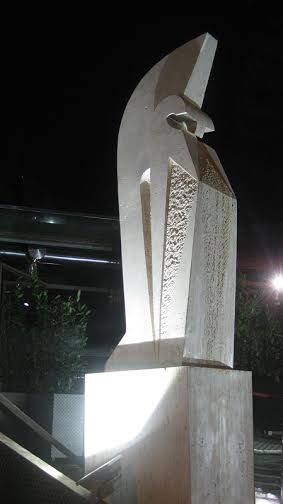
BDB: In these years, you have participated at many solo shows and group exhibitions, both in Italy and abroad. Tell us more about your first exhibition abroad.
AED: My first exhibition abroad was on Thassos island in Greece where I had the opportunity of creating a monumental artwork in stone. It was a laborious experience but also very rewarding. I brought all my tools from Italy in a trolley that weighed almost 70 kg. At that time, the island was a semi-wild place and the sculpture park was isolated; it was 20 m away from the sea and 1 km away from the city centre. But Thassos today is completely different: it has now become a tourist destination with a large population and the sculpture park has now become a point of reference for the whole island.
BDB: Your last solo show titled Ossa (Bones) was in 2018 at the ADD-ART gallery of Spoleto. What is the meaning of the bones, the narrative thread of your installations included in this exhibition? Why have you decided to focus exclusively on the study of ‘primitive’ materials?
AED: In ancient times, bones were often reused to create utensils or objects. These alterations allowed the bones to be reused in daily life within the community, conferring it something that the contemporary society sees as a waste, a second life. With the installation Ossa (Bones), the marble becomes a supporting structure hosted by a wooden shape, which symbolically recalls the ancient tools of which the bones were a part of. It has always fascinated me the association of bones and marble including from a chemical and structural point of view, both being composed of calcium carbonate.
Sculptures included in the Ossa (Bones) exhibition, Spoleto, 2018.
BDB: Are you developing any new artworks at the moment? If so, could you tell us more about it?
AED: Yes, at the moment I am working on an installation made of natural and metallic elements. I would like to make use of a technique called electro-sedimentation: plant-based or organic elements are covered by metallic microparticles which sediment through a chemical process. The final result is a fusion of substance and object which are combined through this chemical process, becoming one.
BDB: Is there any new material with which you have not experimented yet and would like to try?
AED: In the past, I have worked a lot with the fusion of metals, a technique I find very stimulating because of the metallic surfaces’ expressive power and the dynamic role of light on them. In the future, I would like to continue experimenting with this technique through chemical processes such as electro-sedimentation and other similar galvanic procedures.
Discover more about Alberto’s artworks in the Sign of the Times exhibition on Relevo’s website. Make sure to check out Alberto’s website and follow him on @albertoemilianodurante. To discover more about the exhibition, check out @relevoarts and @artgateblog.
